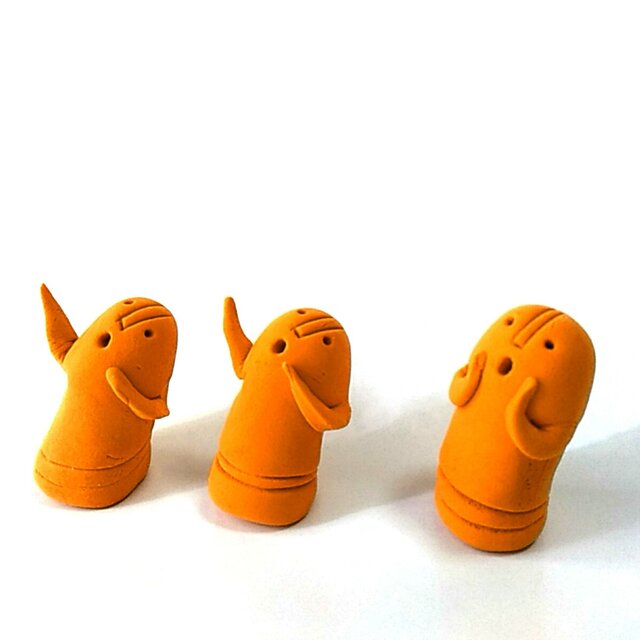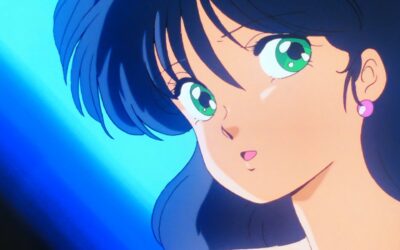It seems that the Haniwa that were enshrined in tombs during the Kofun period is still evolving after more than 1,000 years.
What’s Haniwa?
Haniwa is a Terracotta Tomb Figurine made to be placed in a tomb. There are two types of Haniwa: Cylindrica Haniwa, which is shaped like a cylinder, and figurine Haniwa, which is shaped like a person or an object. Cylindrical Haniwa originated from a cylindrical stand to put a pot on, and there is also Asagao Haniwa which is a pot and stand in one piece. Other types of figurative Haniwa include house-shaped Haniwa (dwellings and warehouses), vessel-shaped Haniwa (swords, armor, and parasols for noblemen), animal-shaped Haniwa (horses and chickens), and human-shaped Haniwa (Miko, noblemen, and warriors).
In the 4th century, house and vessel Haniwa were placed at the top of burial mounds and in the surrounding area, but from the 5th century onwards, human and animal Haniwa became more common. Haniwa was initially used to show the living condition and authority of the person buried in the burial mound, or as an offering to the spirits of the dead, but from the 5th century onwards, its character changed to that of a funeral ritual.
National Treasure, Warrior in Keiko Armor

This is a Haniwa of a warrior dressed in armor and holding a large sword and bow and arrow. The weaponry and armor are elaborately expressed, and it is a valuable material to understand the armament of the warriors of Eastern Japan during the late Kofun period. It is on display at the Tokyo National Museum as a national treasure, and is also known as the “Prince of To-Haku”(To-Haku means Tokyo National Museum).
The armor is called “Shokaku-Tsuki” armor, which has cheek pads to protect the face and Shikoro to protect the back of the head. The armor was made of small clay grains, indicating that the armor was made of iron plates that were riveted together. The armor is made of Keiko, a type of armor made of small steel plates bound together, and it also shows shoulder armor, knee armor, basket armor, shin guard, and shoes.
On the other hand, the right hand is holding a bow in the left hand while the left hand is holding a large sword at the waist. Wrapped around his left wrist is a Tomo (archer’s Tomo) to protect his hand from the bowstring, and on his back is a quiver containing an arrowhead with the arrowhead facing up.
The bowknot found in ten other places indicates that the armor was tied with a string. The Keiko armor is tied in the right gusset, and the knee armor and shingles are tied in the back. The knee armor and Shimbo are tied at the back, and short sleeves are shown below the shoulder armor, suggesting that the Kagote was worn on the bare skin.
The face is gentle and well-proportioned, and it is thought to have been made by a skilled craftsman. In the area around Ota City in eastern Gunma Prefecture, several excellent warrior Haniwa with similar characteristics have been excavated, suggesting the existence of a Haniwa production group based in this area.
Haniwa has evolved into “Yuru-Chara”
The original Yuru-Chara “Oi Hanimaru”

Haniwa is an important part of history, so it has been included in school textbooks as a matter of course. However, it was “Oi Hanimaru”, an educational program broadcasted by “NHK”, that raised awareness of Haniwa.
NHK stands for Japan Broadcasting Corporation, an organization run by the viewing fees that Japanese people are required to pay. Among several channels, there is a dedicated educational channel that broadcasts programs related to languages and hobbies.
“Oi Hanimaru” was a long-running program that aired for six years, from 1983 to 1989. The target audience for this program was 3-year-olds. It is said that the number of words that children of this generation can use increases dramatically and their understanding of the meaning of words deepens.
The first broadcast of “Oi Hanimaru” started as follows. A painter drew a picture of the Kofun period and put it in a magic frame. A prince (Hanimaru) and a horse (Himbei) popped out of the frame. The people around them were surprised to see this, and approached them and tried to talk to them, but no matter what they said, Hanimaru could only answer, “Hanya?”. So, the people around them decided to teach Hanimaru and Himbei various words.
Their cute characters are said to be the beginning of Yuru-Chara. The Yuru-Chara is an abbreviation for “loose mascot character,” and refers to mascot characters used to promote regional development in Japan, to introduce local specialties, to promote information about the region in general through events and various campaigns, and for the corporate identity of companies and organizations.
A mascot character is also called a “local character” if its purpose is to promote a particular region.
Haniwa appearing in large numbers at the Yuru-Chara GP
Since 2005, many of these characters have emerged from various parts of Japan, and in 2011, the Yuru-Chara GP was held.
Kumamon, the 2011 winner, has grown into a character that has expanded its activities to the world.

©Kumamon official
Currently, there are many characters based on the motif of Haniwa. It is said to have been influenced by Hanimaru, but it seems to have been adopted as a Yuru-Chara because the local government wants to use the excavation of ancient artifacts such as Haniwa as an opportunity to revitalize the region, and the Haniwa’s appearance gives the impression of being “loose” or “kawaii”.
Haniwa transformed into Stationery
These Haniwa have now acquired the status of “kawaii” and are being transformed into stationery. Let’s take a look at some of them.
Finger Cot
A stationery tool used mainly to assist in paper flipping. It is said that it was originally created to protect fingers over military gloves during fruit harvesting. With the advent of the paperless society, it was thought that the use of finger sacks would diminish, but they are also used to protect products from sweat and oil when assembling electronic products.
The Finger Cot is now appearing in the form of a clay figurine.

Masking Tape
Masking tape has already been introduced in our BLUE SELECT.
We found a product that makes a cute and funny appearance of Haniwa on this masking tape.

This site is an online merchandising site for handmade products. In Japan, individuals who are not companies are also selling their products on these sites.













